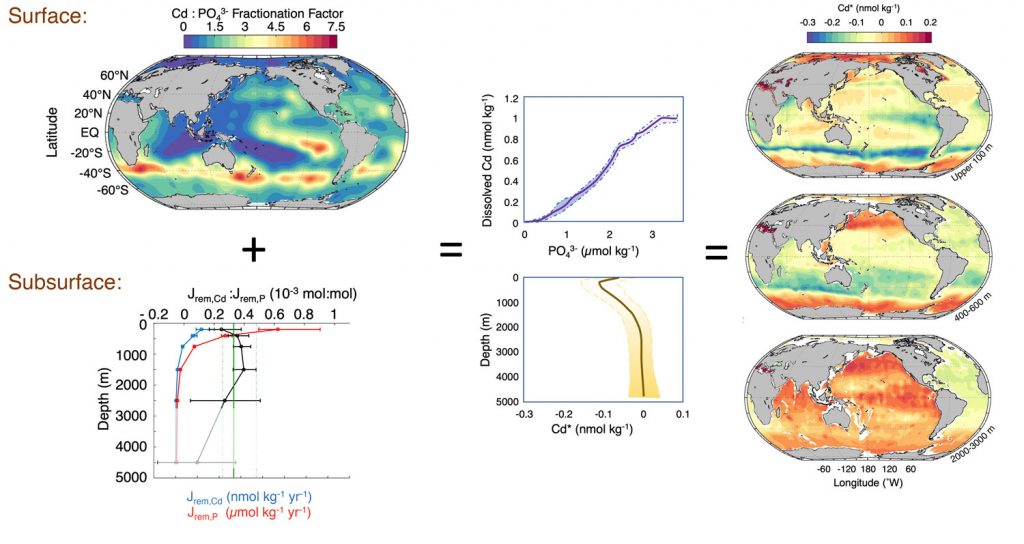Controls of cadmium-phosphate systematic unraveled by Neural Networks and Ocean Circulation Inverse Model
Since cadmium (Cd) is correlated with phosphate (PO43-) in the modern ocean and seawater Cd concentration is recorded in micro-fossils, Cd can be used as a nutrient/circulation paleoceanographic tracer. However, such paleo application is complicated because the processes responsible for this correlation are not fully understood. Roshan and DeVries (2021a, see references below) explore the similarities and contrasts between oceanic Cd and PO43- cycles using an Artificial Neural Network mapping technique and Ocean Circulation Inverse Model (see figure).
A summary of their results:
- The Cd:PO43- ratio in exported particles and its ratio to Cd:PO43- concentration ratio (known as “fractionation factor”) vary remarkably across regions, with an overall effect of depleting Cd relative to PO43- during the formation of water masses in the surface ocean.
- High Cd:PO43- export ratio and fractionation factor correspond to low-iron regions.
- The Cd:PO43- ratio during regeneration of the particles also varies vertically throughout the water column and horizontally across regions of different dissolved oxygen levels, with a global maximum at ~1,500 m.
By implementing a counterfactual scenario, Roshan and DeVries (2021a) find that widespread variability of the fractionation factor is the main destroyer of the Cd-PO43- correlation while the differential Cd:PO43- regeneration is a slight remediator. The produced dissolved Cd climatology is downloadable from Roshan and DeVries (2021b) and can benefit the calibration of seawater dissolved Cd concentration against core-top foraminiferal Cd/Ca ratio for paleoceanographic applications.

References:
Roshan, S., & DeVries, T. (2021a). Global Contrasts Between Oceanic Cycling of Cadmium and Phosphate. Global Biogeochemical Cycles, 35(6), e2021GB006952. DOI: https://doi.org/10.1029/2021GB006952
Roshan, Saeed; DeVries, Tim (2021b): Dissolved Cadmium Climatology. figshare. Dataset. https://doi.org/10.6084/m9.figshare.13536845.v1
